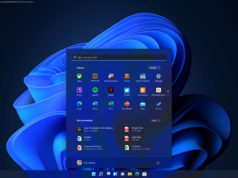Managing productivity is difficult during a pandemic. Many employees are telecommuting, and for some that’s likely permanent. Employee monitoring solutions can help, and we’ve tested all the top players to show you how they rank on features and value.
One positive aspect of the pandemic is that it’s made hybrid work an attractive option for both businesses and employees. But there are difficulties with that model, namely that it leaves managers hanging when it comes to understanding their employees’ productivity. That’s not just about how much work they’re producing, but also the quality of the work and the reasons behind any change. Hybrid work definitely has more freedom attached to it, which means some employees have difficulty managing their time. It’s also got many suffering from burnout because there’s now a blurred boundary between the office and their home. That’s why the employee monitoring product category has been shifting its focus over the last 18 months. Solutions that have been traditionally focused on tracking employee activity, logging suspicious behavior, and sniffing out possible insider threats are now pivoting to not only track productivity, but also monitor health and wellness, and even improve engagement. What Is Employee Monitoring Software? If you’re considering software like this, remember that employee monitoring goes beyond the core time tracking functionality of clock-ins and clock–outs or managing schedules and workloads. Sure, the software reviewed in this roundup starts with tracking players that add nifty monitoring features such as keystroke logging, location tracking, and screenshots. But we also range all the way up to deep monitoring platforms that track all employee activity. These services are designed to manage a large workforce, so some focus more on tracking activity rather than on specific individuals. Still, many employees feel that using these tools is a heavy-handed measure by management, so implementing them can require some delicate diplomacy. On the lighter, less dystopian end of the spectrum, many employee monitoring tools are focused on tracking productivity. A task that’s now more challenging than ever since remote workers are juggling their nine-to-five jobs with half a dozen other personal tasks, like minding their homeschooled children, providing family meals, and running households for sheltering-in-place family members. Working from home challenges the pre-existing structure for productivity tracking, which means monitoring tools need to pivot, too. A good place to start is to sort applications into productive and unproductive app groups so you can break down how productive each team, department, or individual employee is expected to be. Productivity scoring algorithms make it possible to measure individuals against their past performance as well as against that of their peers. This data is less about disciplining employees and more about helping teams course-correct and stay productive. It’s important to have customization and user grouping here because an app that’s deemed productive for one job function may be considered unproductive for another. For instance, social media managers spend much of their time on Facebook and Twitter because that’s core to their role whereas a sales manager spending many hours a day on LinkedIn or other social sites should throw up a red flag. Automation and the ability to set alerts by way of email reminders and warnings are also effective ways to manage a large, distributed workforce. This activity data can also be aggregated on a macro level in real-time admin and manager dashboards. You should also be able to construct detailed reports to slice and dice your various productivity metrics. You can drill down into the data using factors such as the most productive or unproductive employees, or compare team or departmental efficiency or productivity on specific projects. Often, employee monitoring tools will give you at-a-glance data visualizations such as a productivity bar that breaks down productive and unproductive app percentages, or lists and leader boards that show active or inactive users or the most often used apps. Many of the solutions we tested track and log which websites or services employees spend the most time on and which ones are underutilized. That lets you know which tools and subscriptions aren’t being used so you can stop paying for them and free up your budget for more useful resources. The other side of activity tracking is monitoring keystrokes. Many workers would consider this invasive surveillance, but it’s an effective tool if you’re looking for numerical productivity data. Logging keystrokes is essentially a baseline for employee activity. Once you have granular data on how often employees are typing or interacting with their machine, it can be mapped against corresponding screenshots, activity logs, audit trails, and all of the deeper monitoring vectors we get into later to fill out a complete profile of employees’ online activity. Some of the most powerful monitoring software we’ve tested can intake raw keystroke data—meaning, a timestamped mapping of what system keys users pressed at any given time—and cross-reference that against any of the other metrics or captured activity data collected. Newer tools like Controlio can aggregate keystrokes and sync them to video recordings to form a more accurate picture of employee activity. As a result, you can see the full context of what employees were doing, when they were doing it, and a good indication as to why they were doing it. This level of oversight is unmatched for companies requiring forensic evidence in case of, say, an audit to see if the company is in compliance with some regulatory standard.






